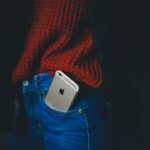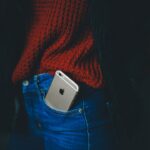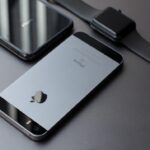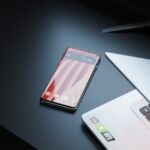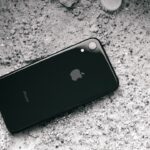In an age where smartphones have become integral to our daily lives, the inability of an iPhone to ring can be a source of significant frustration. The ringing of a phone signifies not just incoming calls but also connections with friends, family, and colleagues. When this essential function fails, it can lead to missed opportunities, important communications slipping through the cracks, and a general sense of disconnection from the world.
Understanding the reasons behind this malfunction is crucial for users who rely heavily on their devices for both personal and professional interactions. The problem of an iPhone not ringing can stem from a variety of sources, ranging from simple user errors to more complex software or hardware malfunctions. Users may find themselves in situations where they are expecting important calls but are met with silence instead.
This issue can be particularly alarming in critical situations, such as waiting for a job offer or an emergency call. Therefore, it is essential to explore the common causes of this problem and how to effectively address them.
Key Takeaways
- Introduction to the problem:
- Many iPhone users experience the frustrating issue of their phone not ringing when receiving calls, which can be caused by software or hardware issues.
- Common software issues that may prevent your iPhone from ringing:
- Do Not Disturb mode, software glitches, and incorrect settings can all lead to your iPhone not ringing when it should.
- Hardware problems that could be causing your iPhone not to ring:
- Issues with the speaker, audio jack, or physical damage to the phone can result in a lack of ringing.
- How to troubleshoot and fix software issues:
- Check Do Not Disturb mode, update software, reset settings, and check for any app conflicts to resolve software-related ringing problems.
- How to troubleshoot and fix hardware issues:
- Test the speaker and audio jack, inspect for physical damage, and consider replacing faulty hardware components to address hardware-related ringing issues.
- Tips for preventing your iPhone from not ringing in the future:
- Regularly update software, avoid physical damage, and be mindful of Do Not Disturb mode to prevent future ringing problems.
- When to seek professional help for your iPhone not ringing:
- If troubleshooting steps do not resolve the issue, seek professional assistance from an Apple Store or authorized service provider.
- Conclusion and final thoughts:
- Understanding the potential software and hardware issues that can cause your iPhone not to ring, along with proactive prevention and knowing when to seek professional help, can help ensure that you never miss an important call.
Common software issues that may prevent your iPhone from ringing
One of the most prevalent reasons an iPhone may not ring is related to its software settings. Users often overlook simple configurations that can mute or silence incoming calls. For instance, the “Do Not Disturb” mode is a feature designed to help users avoid distractions during specific times.
When activated, this mode silences all incoming calls and notifications unless the caller is on a pre-approved list. Many users may inadvertently enable this feature, leading to confusion when they realize their phone is not ringing. Another common software issue involves the ringer settings themselves.
Users may accidentally lower the ringer volume or switch the ringer to vibrate mode without realizing it. This can happen during moments of haste or when adjusting settings in a crowded environment. Additionally, if the phone is connected to Bluetooth devices, such as headphones or speakers, incoming calls may be routed through those devices instead of the phone’s built-in speaker.
This can create a scenario where users are unaware that their phone is ringing because they cannot hear it.
Hardware problems that could be causing your iPhone not to ring

While software issues are often the first culprits when an iPhone fails to ring, hardware problems can also play a significant role. One of the most common hardware-related issues is a malfunctioning speaker. If the speaker is damaged or obstructed by debris, it may not produce sound when a call comes in.
This can happen due to exposure to moisture, physical impact, or simply wear and tear over time. Users should inspect their device for any visible signs of damage or blockage that could affect sound output. Another potential hardware issue involves the internal components responsible for sound production.
The iPhone’s sound system relies on various parts working in harmony, including the speaker, microphone, and audio chip. If any of these components are malfunctioning due to manufacturing defects or physical damage, it could result in the phone not ringing. In some cases, users may notice other audio-related issues, such as distorted sound during calls or media playback, which could indicate a broader hardware problem.
How to troubleshoot and fix software issues
| Issue | Symptoms | Possible Causes | Troubleshooting Steps |
|---|---|---|---|
| Software not launching | Error message, application not responding | Corrupted installation, incompatible software, system resources | Reinstall software, check compatibility, close other applications |
| Crashing or freezing | Program becomes unresponsive, system freezes | Bugs, insufficient memory, conflicting software | Update software, increase memory, check for conflicts |
| Performance issues | Slow response, lagging, high CPU usage | Overloaded system, outdated software, malware | Optimize system, update software, run antivirus scan |
| Compatibility issues | Features not working, errors with other software | Outdated drivers, conflicting software, system updates | Update drivers, check for conflicts, install updates |
To address software-related issues that may prevent an iPhone from ringing, users can take several steps to troubleshoot effectively. First and foremost, checking the “Do Not Disturb” settings is essential. Users can access this feature by swiping down from the top-right corner of the screen (on newer models) or swiping up from the bottom (on older models) to open the Control Center.
If the crescent moon icon is highlighted, it indicates that “Do Not Disturb” is active. Tapping on this icon will disable the feature and restore normal ringing functionality. Next, users should verify their ringer settings by navigating to “Settings” > “Sounds & Haptics.” Here, they can adjust the ringer volume slider to ensure it is set at an audible level.
Additionally, users should check if the “Vibrate on Ring” option is enabled; if it is, they may want to disable it temporarily to determine if that resolves the issue. Furthermore, disconnecting any Bluetooth devices can help rule out routing problems; users can do this by going to “Settings” > “Bluetooth” and toggling off Bluetooth connectivity.
How to troubleshoot and fix hardware issues
When software troubleshooting does not resolve the issue of an iPhone not ringing, it may be time to investigate potential hardware problems. A good starting point is to test the speaker functionality by playing music or a video. If sound is audible during media playback but not during calls, this could indicate a software issue rather than hardware failure.
However, if there is no sound at all, users should consider inspecting the speaker for any visible obstructions or damage. If users suspect that their speaker may be malfunctioning, they can perform a hard reset of their device as a preliminary step. This process involves holding down both the power button and the volume down button until the Apple logo appears on the screen.
A hard reset can sometimes resolve minor glitches that affect hardware performance. If issues persist after this step, users may need to seek professional assistance or consider visiting an Apple Store or authorized service provider for further diagnosis and repair.
Tips for preventing your iPhone from not ringing in the future

Preventive measures can significantly reduce the likelihood of encountering ringing issues with an iPhone in the future.
Software Updates and Settings
One effective strategy is to regularly check and update software settings. Keeping the device’s operating system up-to-date ensures that users benefit from bug fixes and improvements that Apple regularly rolls out. Users should also familiarize themselves with their device’s settings and features to avoid accidental changes that could mute notifications.
Physical Care and Maintenance
Maintaining physical care of the device can help prevent hardware-related issues. Users should avoid exposing their iPhones to extreme temperatures or moisture, as these conditions can damage internal components over time. Regularly cleaning the speaker area with a soft brush or cloth can help prevent dust buildup that might obstruct sound output.
Protective Measures
Furthermore, using protective cases designed for shock absorption can minimize damage from accidental drops.
When to seek professional help for your iPhone not ringing
If troubleshooting efforts do not yield results and an iPhone continues to fail in ringing for incoming calls, it may be time to seek professional help. Users should consider visiting an Apple Store or authorized service provider if they suspect hardware damage or if their device exhibits other concerning symptoms such as overheating or battery drain. Trained technicians have access to specialized tools and diagnostic equipment that can identify underlying issues that may not be apparent through standard troubleshooting methods.
Moreover, if an iPhone is still under warranty or covered by AppleCare+, seeking professional assistance can save users from incurring repair costs. Apple technicians are equipped with knowledge about common issues specific to various iPhone models and can provide tailored solutions based on individual circumstances. In some cases, they may recommend repairs or replacements that ensure users regain full functionality of their devices.
Conclusion and final thoughts
The inability of an iPhone to ring can stem from various software and hardware issues that require careful examination and troubleshooting. By understanding common causes and implementing effective solutions, users can often resolve these problems independently. However, when faced with persistent issues despite troubleshooting efforts, seeking professional assistance becomes essential for restoring functionality and ensuring reliable communication through one’s device.
In today’s fast-paced world where connectivity is paramount, addressing ringing issues promptly allows users to stay engaged with their personal and professional networks without interruption. By taking proactive measures and being aware of potential pitfalls, iPhone users can enjoy seamless communication experiences while minimizing disruptions caused by technical malfunctions.
If you are experiencing issues with your iPhone not ringing, it could be due to a variety of reasons. One possible explanation could be related to privacy settings on your device. To learn more about how privacy settings can impact your iPhone’s functionality, check out this informative article on getiphoneinfo.com. For more troubleshooting tips and advice on all things iPhone-related, be sure to visit getiphoneinfo.com. If you still need assistance, don’t hesitate to reach out to their team for support by visiting their contact page at getiphoneinfo.com.
FAQs
Why is my iPhone not ringing?
There are several reasons why your iPhone may not be ringing, including the device being on silent mode, Do Not Disturb mode being enabled, or a software issue.
How do I check if my iPhone is on silent mode?
To check if your iPhone is on silent mode, look at the switch on the side of the device. If the switch is showing an orange color, the device is on silent mode.
How do I disable Do Not Disturb mode on my iPhone?
To disable Do Not Disturb mode on your iPhone, swipe down from the top right corner of the screen to open Control Center, then tap the crescent moon icon to turn off Do Not Disturb mode.
What should I do if my iPhone is not ringing despite being on normal mode?
If your iPhone is not ringing despite being on normal mode, you can try restarting the device, checking for any software updates, or resetting the device’s settings.
Could a hardware issue be causing my iPhone not to ring?
Yes, a hardware issue such as a faulty speaker or audio component could potentially cause your iPhone not to ring. If you suspect a hardware issue, it is recommended to contact Apple Support or visit an authorized service provider for assistance.

